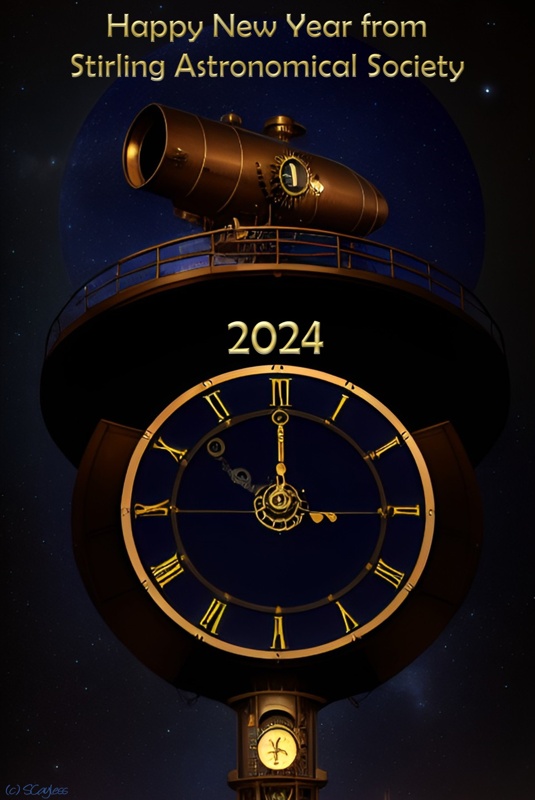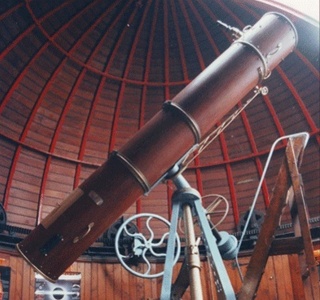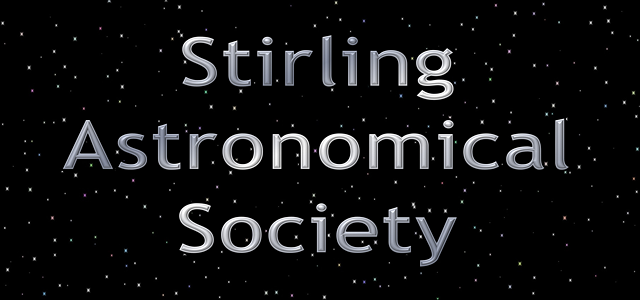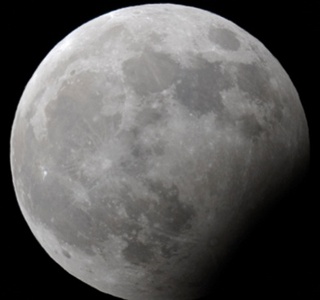Astronomy news - July 2024
05-28 July: Moon Phases
05 Jul: New Moon (23:57)
13 Jul: First Quarter (23:48)
21 Jul: Full Moon (11:17)
28 Jul: Third Quarter (03:51)
Nova expected in Corona Borealis
A normally faint star in Corona Borealis could brighten dramatically in coming weeks or months. T Coronae Borealis (RA: 15h 59m 30.26s; Dec: 25° 55' 12.6'') is an example of a recurrent nova. Normally a tenth-magnitude star too faint to be visible to the naked eye, TCrB has on at least two previous occasions brightened dramatically to around magnitude 2. This happens because T CrB is an accreting binary system, with material being transferred from the red giant component to a smaller, hotter, companion. As this material accumulates it eventually sets off an outburst, causing the smaller companion to brighten rapidly in a nova event. Similar outbursts were seen in May 1866 and February 1946, suggesting a period of between 79 and 80 years.
On each of the previous occasions the outburst was preceded by a characteristic dip in the light curve. Such a dip has recently been seen again, prompting speculation that another nova event is imminent. If the outburst is as bright as before, T CrB will briefly outshine Alphecca (α CrB), becoming for a while the brightest star in Corona Borealis.
Corona Borealis is currently visible in the south-west from around midnight. T CrB is located close to ε CrB, the easternmost of the main stars in the constellation. Over the next few weeks it would be worth taking a close look at Corona Borealis, noting the positions of the stars, and checking back from time to time for changes. We may be about to see the most dramatic nova event for many years.
Further details, charts and updates on the NASA and Spaceweather websites.
===== Previous News items =====
20 June: Summer solstice
As we reach the longest day there is still plenty happening in the night sky. Over the next few days, look for a beautiful Full Moon (the Strawberry Moon) low to the horizon. There is also a good possibility of noctilucent clouds over the next few weeks. And although the nights are short, there are still deep space objects to be observed in the early hours, especially with the Summer Triangle well placed for the next few months.
06-28 June: Moon Phases
06 Jun: New Moon (13:37)
14 Jun: First Quarter (06:18)
22 Jun: Full Moon (02:07)
28 Jun: Third Quarter (22:53)
10 - 12 May: Auroral activity
As solar activity continues to intensify, strong auroral displays were seen over Stirling on the evening of the 10th May. There have been further coronal mass ejections, so be on the lookout for more aurorae on Saturday and Sunday night.
Update: Images of Friday's displays now on the gallery.
05/06 May: Eta Aquarid meteor shower
The Eta Aquarids are an annual meteor shower associated with Halley's comet. The best time to observe will be in the early hours just before dawn on the 5th or 6th May. This year the peak falls just a couple of days before the New Moon, so moonlight will not interfere.
The radiant (RA: 22h20m Dec: -01 °) will be low to the horizon, rising in the East just before dawn.
01-23 May: Moon Phases
01 May: Third Quarter (12:27)
08 May: New Moon (04:21)
15 May: First Quarter (12:48)
23 May: Full Moon (14:53)
08 April: Total solar eclipse
The total solar eclipse on the 8th April will be visible in parts of Mexico, the United States and Canada. While the total phase of the eclipse will not be visible from any part of the UK, it will be possible to watch it live online via the NASA website.
Remember never to look directly at the Sun. The NASA website has information on safe solar viewing and eye safety.
08 April: Partial eclipse from the UK
In the UK a thin partial eclipse may just be visible for a few minutes at sunset from a high vantage point with a clear view of the horizon.

Remember never to look directly at the Sun. The NASA website has information on safe solar viewing and eye safety.
02-24 April: Moon Phases
02 April: Third Quarter (04:14h)
08 April: New Moon* (19:20h)
15 April: First Quarter (20:13h)
24 April: Full Moon (00:48h)
* Total solar eclipse visible in Mexico, United States and Canada.
Comet 12P/Pons-Brookes
Comet 12P/Pons-Brookes will be visible in the western sky towards the end of March. Look for the comet near the horizon shortly after sunset using binoculars or a small telescope. Towards the end of the month it may become bright enough to be visible to the naked eye. The comet approaches perihelion in April.
14 - 15 March: Moon and Pleiades
The Moon passes close to the Pleiades on the evenings of the 14th and 15th March.
13 March: Jupiter and Moon
The crescent moon will be close to Jupiter in the evening sky on the 13th March. Less than three degrees apart, the two will be visible for about an hour after sunset.
3-25 March: Moon Phases
03 March: Third Quarter (15:23h)
10 March: New Moon (09:00h)
17 March: First Quarter (04:10h)
25 March: Full Moon (07:00h)
2-24 February: Moon Phases
02 February: Third Quarter (23:18h)
09 February: New Moon (22:59h)
16 February: First Quarter (15:00h)
24 February: Full Moon (12:30h)
18 January: Jupiter-Moon Conjunction
Jupiter will shine brightly in the night sky all through January, and will come into a close conjunction with the first quarter Moon on 18 January. The two will move across the sky together from sunset until around 01:00.
08 January: Moon, Venus and Mercury
On the morning of Jan 8th, the waning cresent Moon, Venus and Mercury will all be briefly visible in the morning twilight. Look to the south-eastern horizon just before sunrise (07:30) - you will need a clear view to the horizon and a clear sky.
4-25 January: Moon Phases
4 January: Third Quarter (03:30h)
11 January: New Moon (11:57h)
18 January: First Quarter (03:52h)
25 January: Full Moon (17:54h)









